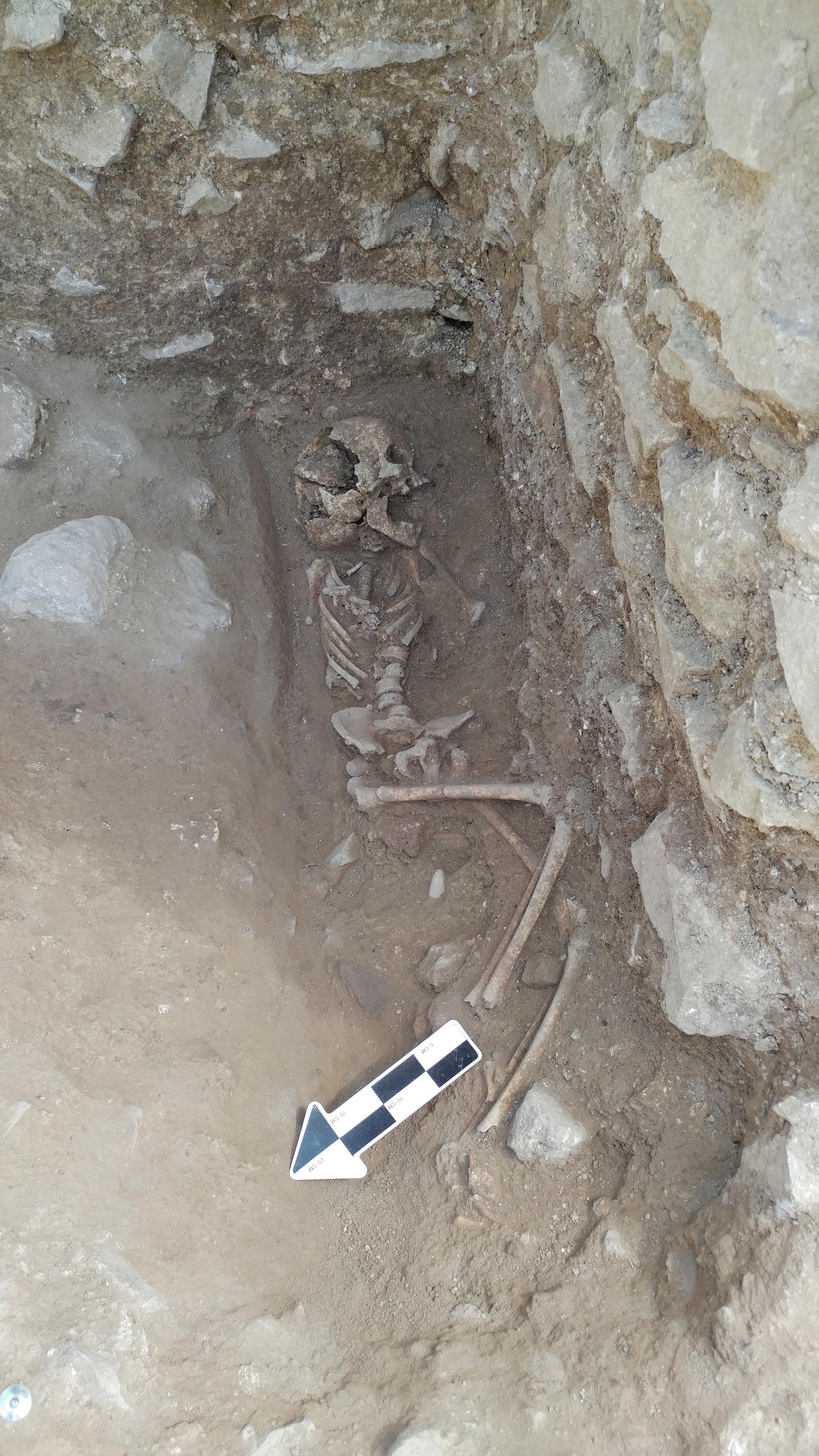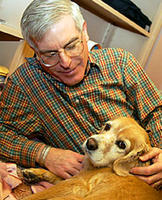
Photo courtesy of David Pickel/University of Stanford
The vampire burial of a small child, who was apparently interred with a rock in his or her mouth to prevent him from rising from the dead, has been discovered in northern Italy. According to a press release from the University of Arizona, the child has come to be known as the “Vampire of Lugnano.” The town is located north of Rome in the Umbria region of the country. The University of Arizona’s archeologist Professor David Soren, who has been working in the Lugnano area since 1987, is quoted as saying, “I’ve never seen anything like. It’s extremely eerie and weird.”
While David Pickel, of the University of Stanford, who is the director of the excavation site, is quoted as saying, “Given the age of this child and its unique deposition, with the stone placed within his or her mouth, it represents, at the moment, an anomaly within an already abnormal cemetery. This just further highlights how unique the infant – or now, rather, child – cemetery at Lugnano is.”
A press release about the find says that the child was around 10 years old and lived around the fifth century.
Here’s what you need to know:
1. David Soren Says the Child Was Suffering From Malaria at the Time of His/Her Death

Wikipedia
David Soren says that the vampire child was suffering from malaria at the time of his or her death, as excavators found an abscessed tooth, a sign of the disease, according to the university. Soren opines that the child was given the vampire burial in order to prevent he or she from coming back from the dead to spread the disease.
2. The ‘Cemetery of Children’ Has Produced Evidence of Witchcraft
Soren has said that the “Cemetery of Children” or “La Necropoli dei Bambini where the vampire child was found, has produced a multitude of evidence demonstrating the witchcraft that was prevalent at the time. Scattered around the graveyard, archeologists have found toad bones, raven bones and cauldrons made of bronze. In the past, the graveyard was thought to have been reserved for unborn fetuses, babies and toddlers. There were five new bodies discovered at the cemetery during the summer of 2018. The university will return to the site in the summer of 2019.
3. David Pickel Said that the Abnormality of the Tomb Where the Child Was Found Has Piqued Archeologist’s Interest

LinkedIn/David Pickel
The director of the site, David Pickel, said that the abnormality of the tomb where the child was found had piqued the interest of the archaeologists working in the area. Pickel said, “Knowing that two large roof tiles were used for this burial, I was expecting something unique to be found inside, perhaps a “double-inhumation” – not uncommon for this cemetery – where a single burial contains two individuals. After removing the roof tiles, however, it became immediately clear to us that we were dealing with an older individual.”
4. Vampire Burials Have Been Found Across Europe in the Past
Vampire burials have been found across Europe in the past, including in Venice in Italy and Northampton in England. Typically, dismembering the corpse and the driving of a stake through the heart was how the people of the time would prevent the dead from rising. Jordan Wilson, a PhD studying the site, is quoted as saying, “This is a very unusual mortuary treatment that you see in various forms in different cultures, especially in the Romand world, that could indicate there was a fear that this person might come back from the dead and try to spread disease to the living.” Wilson added, “Anytime you look at burials, they’re significant because they provide a window into ancient minds. We have a saying in bio-archaeology: “The dead don’t bury themselves.” We can tell a lot about people’s beliefs and hopes by the way they treat the dead.”
The Venice find occurred in March 2009 and involved a female from the 16th century who had a brick jammed in her jaws, according to Reuters. The 16th century saw a plague sweep through Venice. The Reuters report says that the belief of the era was the vampires were behind the spreading of the Black Death. Anthropologist Matteo Borrini from the University of Florence told the agency at the time, “This is the first time that archaeology has succeeded in reconstructing the ritual of exorcism of a vampire. This helps… authenticate how the myth of vampires was born.”
5. A 3-Year-Old Girl Was Found in the Same Graveyard With Her Arms & Legs Pinned Down
In another area of the vampire cemetery, a three-year-old girl’s remains were found with her hands and feet pinned down. Archeologists believe that this was an attempt to prevent her from rising from the dead. Professor Soren said, “We know that the Romans were very much concerned with this and would even go to the extent of employing witchcraft to keep the evil – whatever is contaminating the body- from coming out.” The practice of pinning down bodies was common in many different cultures across the world.
READ NEXT: Michigan School Teachers Admit to Being Porn Stars on the Side